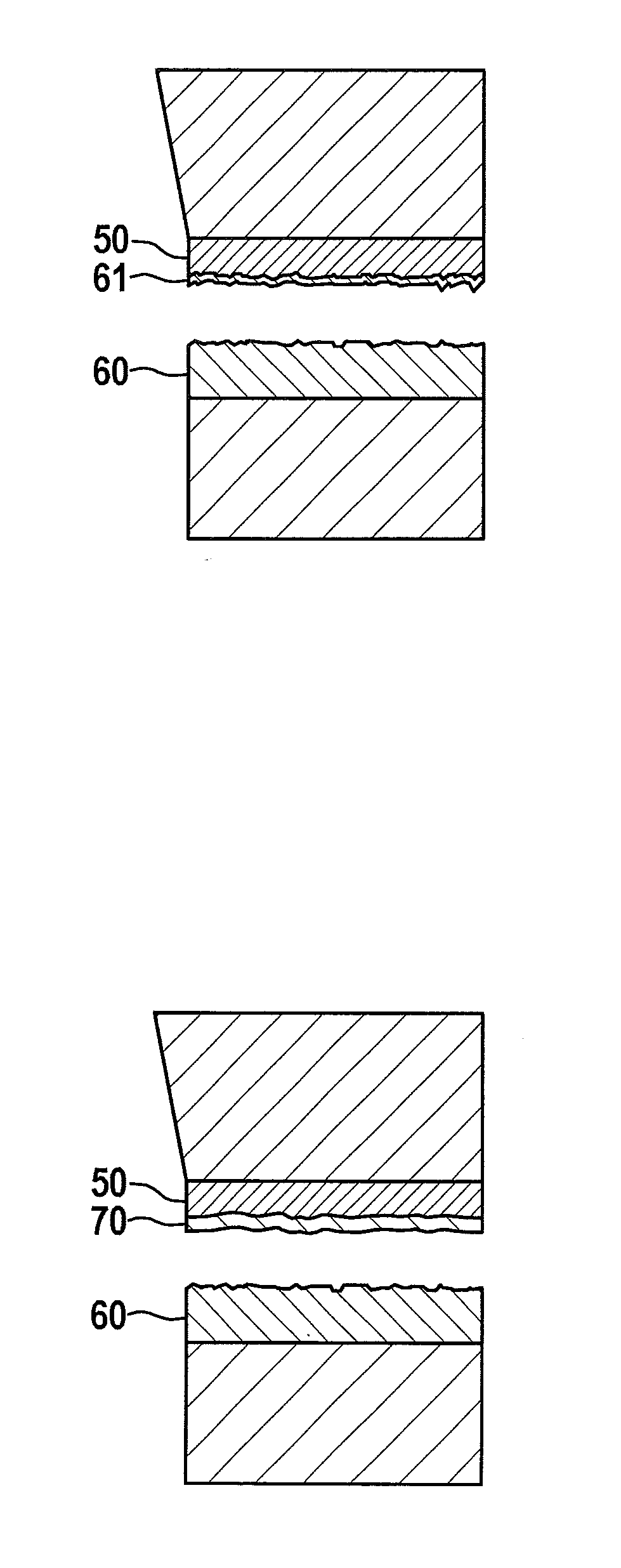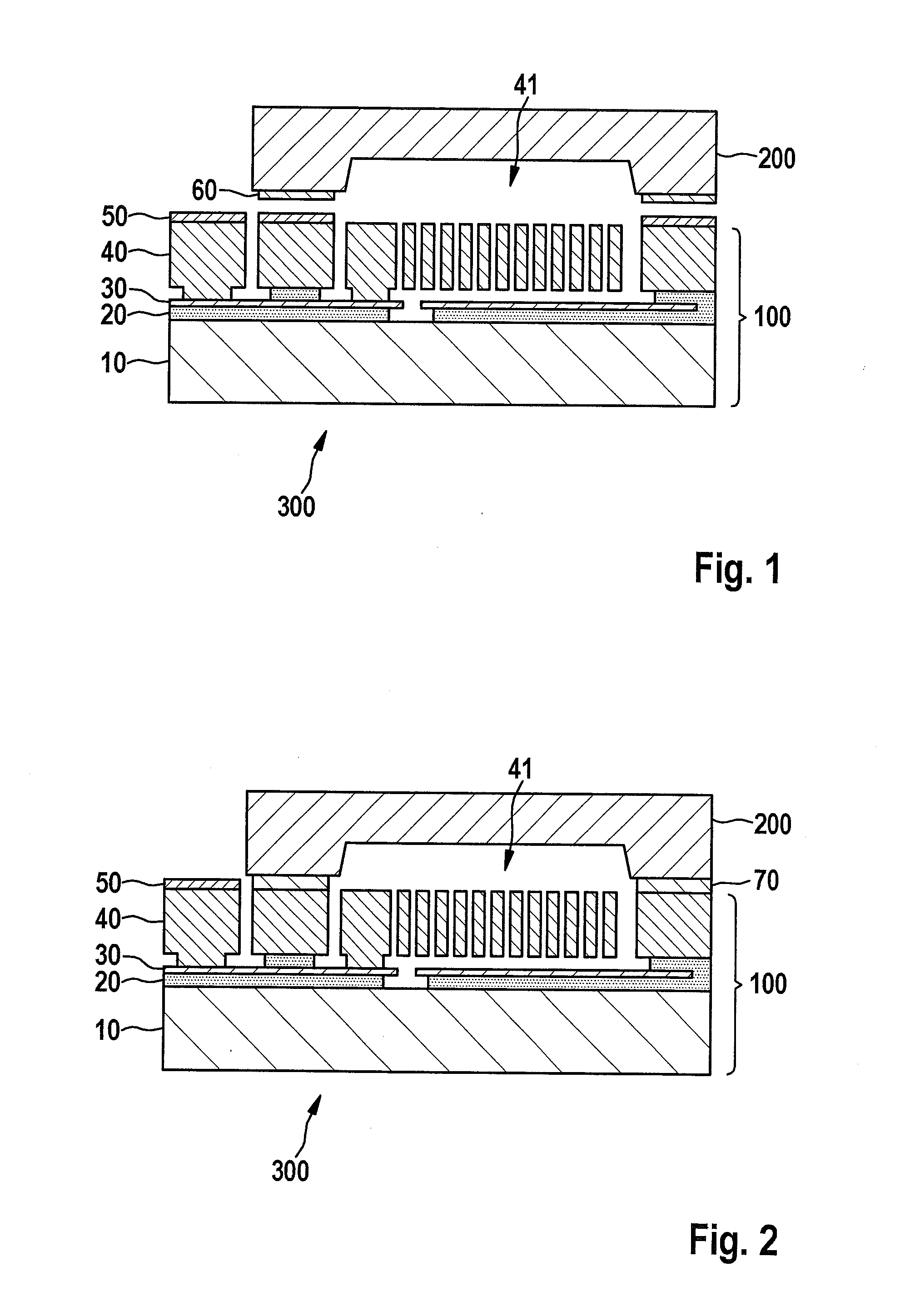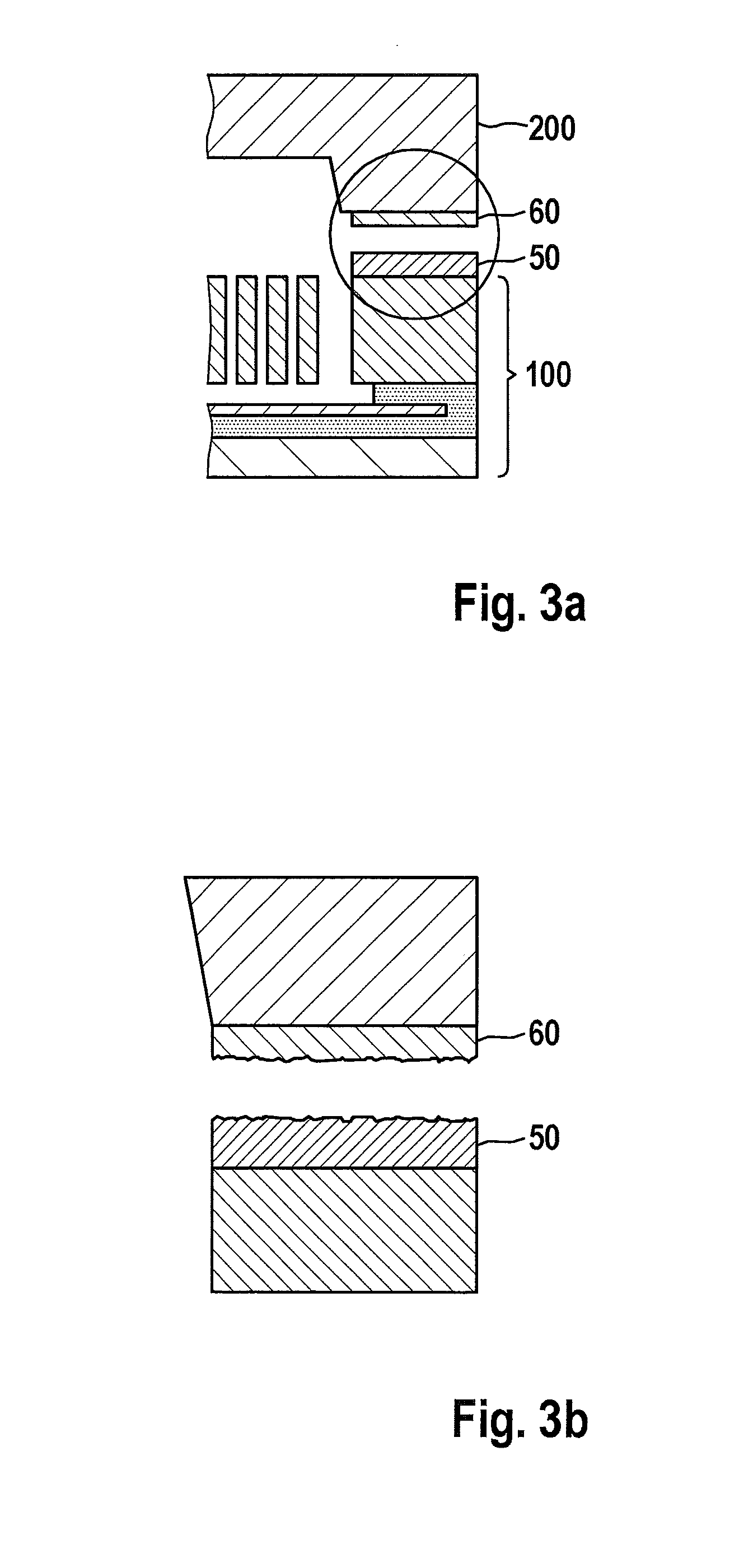Method for eutectic bonding of two carrier devices
a carrier device and eutectic bonding technology, applied in the direction of instruments, soldering apparatus, semiconductor/solid-state device details, etc., can solve the problems of limited interdiffusion of germanium and aluminum required for the bonding process, homogeneity and reliability, and impair the bonding adhesion, etc., to achieve the effect of improving the eutectic bonding method
- Summary
- Abstract
- Description
- Claims
- Application Information
AI Technical Summary
Benefits of technology
Problems solved by technology
Method used
Image
Examples
Embodiment Construction
[0043]FIG. 2 shows a cross sectional view of a conventional eutectically bonded micromechanical sensor element 300 having two carrier devices 100, 200. A eutectic 70 is visible, which is developed as a metallic aluminum-germanium structure. Eutectic 70 forms an hermetic sealing ring around micromechanical patterns 41 of MEMS wafer 100, as well as electrical contacts between MEMS wafer 100 and cap wafer 200, if layers 50, 60 of the two bonding materials are connected electrically conductively to thick functional layer 40 and cap wafer 200.
[0044]FIG. 3a shows a section, emphasized by a circular frame, of the two bonding regions having a first layer 50 of a first bonding material (e.g. aluminum) and a second layer 60 of a second bonding material (e.g. germanium). FIG. 3 shows the emphasized area of FIG. 3a basically greatly enlarged. One may see that surfaces of layers 50, 60 are able to have considerable surface roughness, and therefore permit only an incomplete, partially only point-...
PUM
| Property | Measurement | Unit |
|---|---|---|
| Thickness | aaaaa | aaaaa |
Abstract
Description
Claims
Application Information
 Login to View More
Login to View More - R&D
- Intellectual Property
- Life Sciences
- Materials
- Tech Scout
- Unparalleled Data Quality
- Higher Quality Content
- 60% Fewer Hallucinations
Browse by: Latest US Patents, China's latest patents, Technical Efficacy Thesaurus, Application Domain, Technology Topic, Popular Technical Reports.
© 2025 PatSnap. All rights reserved.Legal|Privacy policy|Modern Slavery Act Transparency Statement|Sitemap|About US| Contact US: help@patsnap.com



